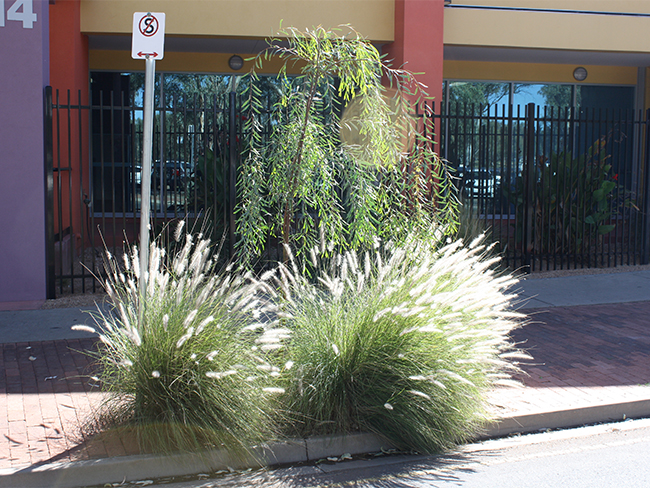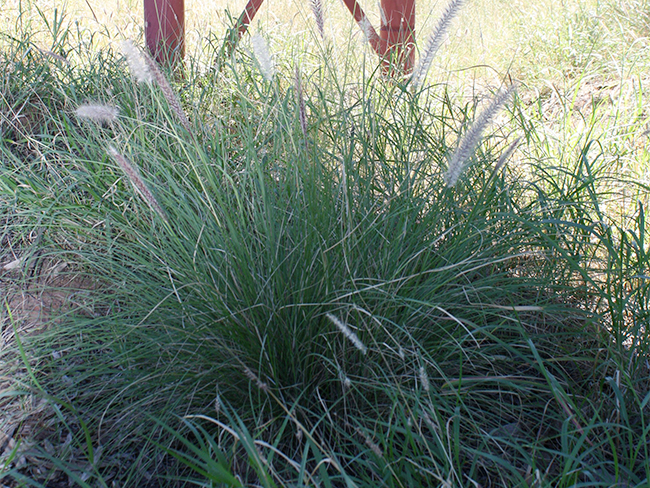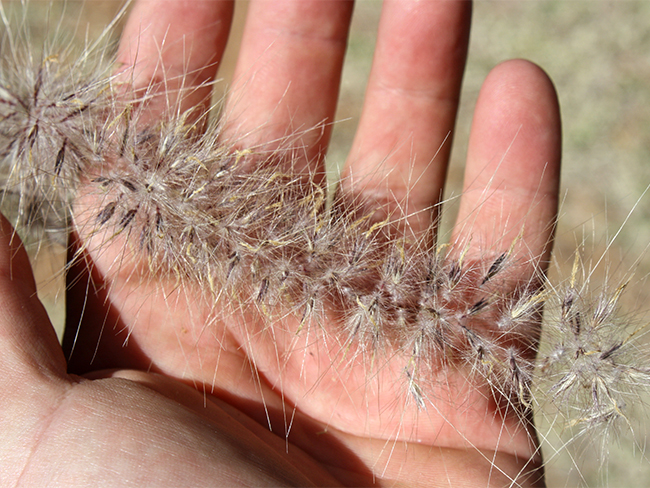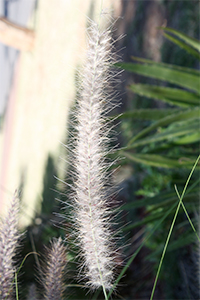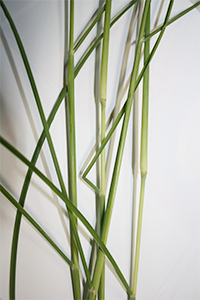Fountain grass
Scientific name: Cenchrus setaceus
Declaration status: Class B
Fountain grass is a native of northern and eastern Africa and south-western Asia.
Fountain grass can grow in tropical to semi-arid areas and can live for up to 20 years. It prefers open, dry habitats, particularly rocky areas but can also grow in sandy soils.
You should destroy any garden planting in the Northern Territory to avoid the weed spreading.
For more information, get the fountain grass identification fact sheet PDF (955.3 KB).
Impact
Fountain grass is a highly invasive grass that out-competes native vegetation. It is used as an ornamental grass in gardens and along roadsides. It is a weed of pastures, railway corridors and roads interstate.
Fountain grass can have all of the following impacts:
- forms dense stands that exclude other plants
- not good for grazing due to its coarse rough leaves.
Identification
You should use this as a guide. There may be other plants or weeds that look similar.
- up to 1.5m high, densely tufted branches
- leaf blade 0.4cm wide and 60cm long
- small directed teeth on the leaf margins and upper surface
- flowers pink to purple, 6 to 30cm long
- cylindrical seed head, spikelets up to 0.7cm long surrounded at the base by white to purplish, feather-like bristles mostly 1.5 to 2.6cm long and one growing up to 4cm long
If you are unsure, contact the Weed Management Branch.
Control
Chemical control
The best time to treat fountain grass is from December to March. Below is a list of treatment methods that can be used.
| Chemical and concentration | Rate | Situation, method and notes |
|---|---|---|
|
Glyphosate 360 g/L Various trade names and formulations | 10mL / 1 L |
Seedling or adult (individuals or infestation): Foliar spray – apply when actively growing |
Non-chemical control
Hand pulling and grubbing
Weeds, including their roots, are physically pulled out of the ground by hand or using hand tools.
This is an effective method of control for individual weeds and recent outbreaks that haven’t released seeds yet, but it requires a lot of labour.
Spread
Fountain grass seed is spread by:
- wind
- vehicles
- humans
- livestock
- animals.
Seeds can stay viable in the soil for at least seven years.
Several wild fountain grass populations have been detected and subsequently destroyed in central Australia.
It is imperative that deliberate garden plantings do not ‘escape’ into the wild.
Spread prevention
You can prevent the spread of fountain grass by doing all of the following:
- map infestations to help develop a management plan
- control minor infestations, isolated outbreaks or seedlings first
- designate wash down areas and actively work to prevent contamination of clean areas
- monitor areas that you have treated and watch for re-infestations.
Give feedback about this page.
Share this page:
URL copied!
